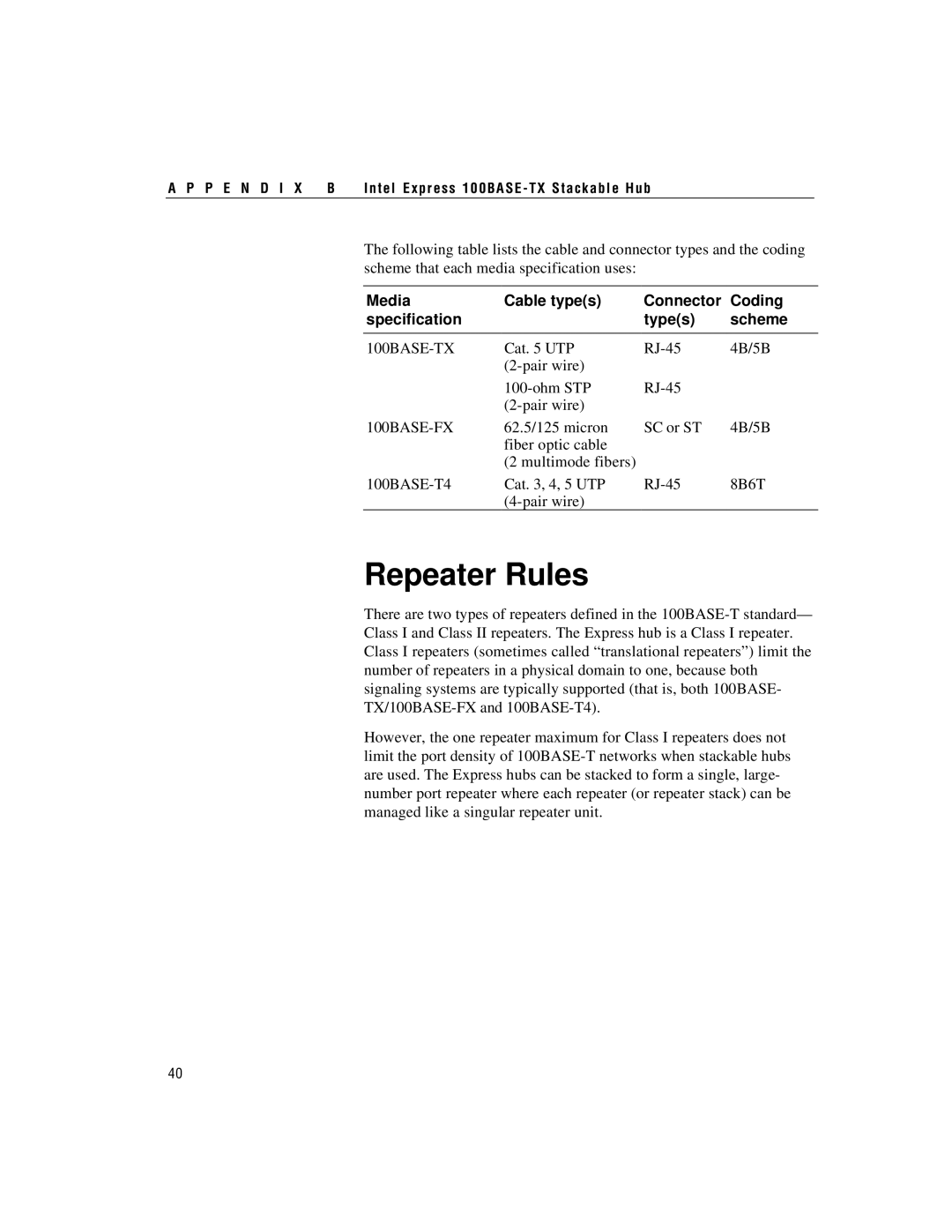
A P P E N D I X B | Intel Express 100BASE- TX Stackable Hub |
The following table lists the cable and connector types and the coding scheme that each media specification uses:
Media | Cable type(s) | Connector | Coding |
specification | | type(s) | scheme |
| | | |
100BASE-TX | Cat. 5 UTP | RJ-45 | 4B/5B |
| (2-pair wire) | | |
| 100-ohm STP | RJ-45 | |
| (2-pair wire) | | |
100BASE-FX | 62.5/125 micron | SC or ST | 4B/5B |
| fiber optic cable | | |
| (2 multimode fibers) | | |
100BASE-T4 | Cat. 3, 4, 5 UTP | RJ-45 | 8B6T |
| (4-pair wire) | | |
Repeater Rules
There are two types of repeaters defined in the 100BASE-T standard— Class I and Class II repeaters. The Express hub is a Class I repeater. Class I repeaters (sometimes called “translational repeaters”) limit the number of repeaters in a physical domain to one, because both signaling systems are typically supported (that is, both 100BASE- TX/100BASE-FX and 100BASE-T4).
However, the one repeater maximum for Class I repeaters does not limit the port density of 100BASE-T networks when stackable hubs are used. The Express hubs can be stacked to form a single, large- number port repeater where each repeater (or repeater stack) can be managed like a singular repeater unit.
